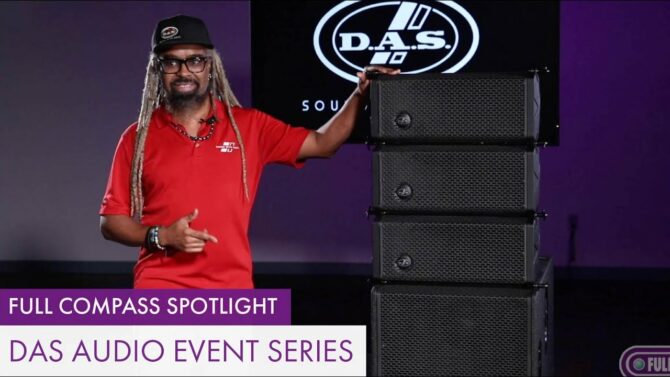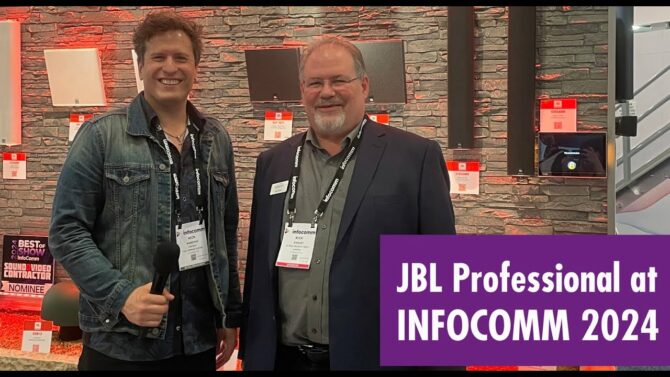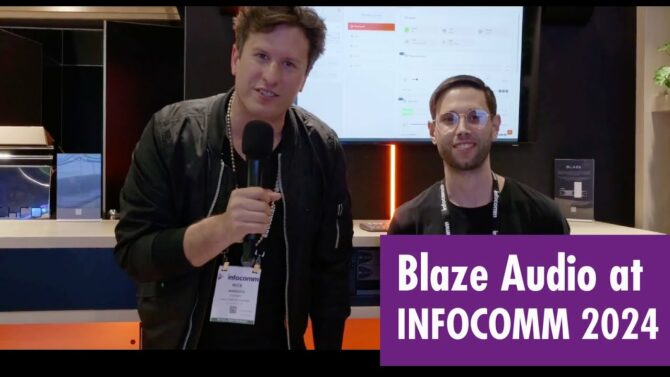Because an audio interface Definition:
Definition:
A device to convert audio signals into digital code suitable for use by a computer; typically communication occurs through a port such as USB, Thunderbolt, FireWire, etc. is the crucial link between your computer and the outside world, it’s important to research your needs carefully—and those needs aren’t just about today, but what you may find necessary tomorrow.
For computer-based recording setups, your main interface Definition:
Definition:
A device that adds I/O capability to another device. Common would be a MIDI, audio or video interface for a computer. choices use FireWire Definition:
Definition:
Apple protocol (also IEEE-1394), developed with other companies including Sony and Panasonic, for digital data transfer at rates of 100-800 Mbps, USB Definition:
Definition:
(Universal Serial Bus) A standard, bi-directional serial connection between computers and peripheral devices., or Thunderbolt Definition:
Definition:
A computer interface port or cable that multiplexes PCIe and DisplayPort data lines into two serial signals (along with DC power), which is then demultiplexed into separate PCIe and DisplayPort ports by the Thunderbolt controllers at receiving devices. ports. For professional, commercial networks, you’ll be interconnecting devices through Ethernet connections like AVB Definition:
Definition:
AVB (Audio Video Bridging): A network standard by the Avnu Alliance. (Audio Video Bridging) and DANTE Definition:
Definition:
Dante™ (Digital Audio Network Through Ethernet): The audio-over-IP standard created by Audinate (layer 3). (Digital Definition:
Definition:
A signal or data expressed as series of the digits 0 and 1, typically represented by values of a physical quantity such as voltage or magnetic polarization. Audio Network Through Ethernet Definition:
Definition:
A local area network (LAN) using cables classified according to certain categories (CAT5, CAT6, CAT5e, etc.). These relate to the speed a cable can handle.), or options like MADI Definition:
Definition:
MADI (Multichannel Audio Digital Interface): Originally called AES10. A unidirectional (sender to receiver), digital audio interface that has common features with the AES3 stereo digital audio interface. MADI transmits up to 64 channels serially over fiber-optic or coaxial lines. (Multichannel Audio Digital Interface; see Fig. 1). This article covers audio interfaces for computer-based recording.
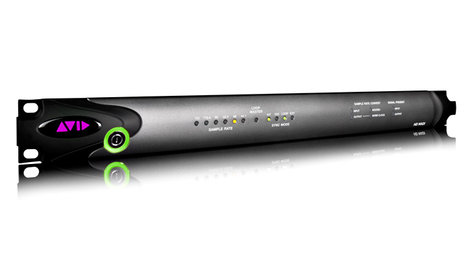
1. Check the specs and compatibility.
Make sure the interface is compatible Definition:
Definition:
Capable of operating with a particular selection of hardware or software. with your computer, so both can work together optimally. Although not necessarily a cutting-edge technology, USB 2.0 Definition:
Definition:
Stereo sound with 2 speakers and no subwoofer. is a time-tested and ubiquitous audio interface option, with USB 3.0 and Thunderbolt offering higher performance. FireWire is not recommended going forward, because it’s in its twilight years. Thunderbolt, while fast, is a fairly mature technology on the Mac, but often requires specific chip Definition:
Definition:
(slang) Integrated circuit. sets or motherboards for Windows. For example, Universal Audio has tested their Apollo X Thunderbolt 3 interfaces (Fig. 2) extensively, and has support docs on their web site for Windows-based computers that are known to work, the steps needed to configure Definition:
Definition:
1. To alter the way in which software interacts with a computer system in order to make the software compatible with a specific set of peripherals. 2. To alter parameters in a system's hardware elements so that they can work together in a system context. your computer, and adapters and computers to avoid until further notice.

With any cutting-edge interfaces, always check the manufacturer’s web site and the web for information on compatibility with your particular system.
2. Don’t be too concerned about backward compatibility.
If you have a computer with a USB 2.0 port or a Mac with a Thunderbolt 2 port, but plan to upgrade to a newer computer, you can think ahead and get a USB 3.0 or Thunderbolt 3 interface. Although these won’t deliver the performance that the latest port protocols offer (i.e., a USB 3.0 interface will operate at USB 2.0 speeds with a USB 2.0 port), they’re almost always compatible (although with Thunderbolt, you’ll need an adapter like the Apple Thunder 3-to-2 (see Fig. 3), and will be ready for when you upgrade.

But also note that speed isn’t everything. The latency Definition:
Definition:
The amount of delay a signal, data, sound, video, or control signal acquires within a device, system, or long-distance connection. (the delay Definition:
Definition:
A device that outputs and input signal some time later. This can be short for echo effects, longer for matching speaker stacks, or aligning sound and video. between sending audio into the interface, and then monitoring it through plug-ins) with a USB 3.0 interface won’t be that much better than a USB 2.0 interface. The main advantage is being able to stream more channels of audio at higher sample rates—so for example, if you’re doing live Definition:
Definition:
Live broadcast of an event or program without substantial delay or editing. recording at 96 kHz Definition:
Definition:
Abbreviation for Kilohertz: 1,000 Hertz, or one thousand cycles per second., you may benefit from USB 3.0. Then again, if you’re a singer/songwriter working solo, USB 2.0 will likely do what you need.
3. Take advantage of the audio interface market’s competitive nature.
The audio interface market is crowded and competitive, so less-recognized names often give high performance at low prices to try to cut into the market share of the “big guys”—like the TASCAM US-20x20 Celesonic USB 3.0 interface (Fig. 4) and the Zoom UAC-8 USB 3.0 interface (both of which can also serve as digital mixers, like many other interfaces).
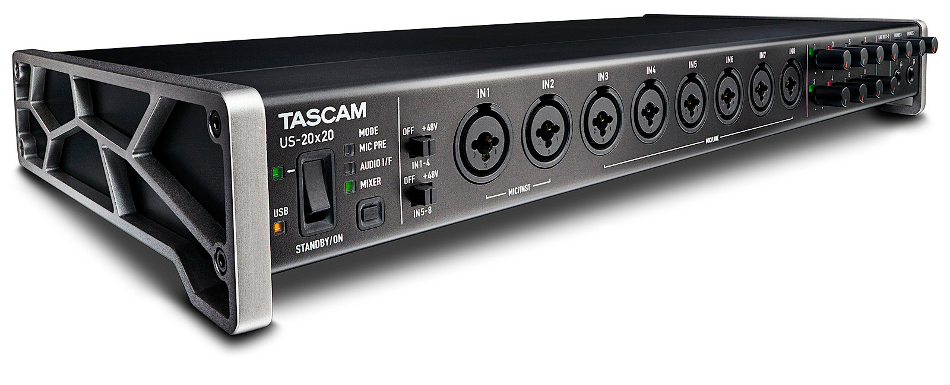
And there are interfaces that fly “under the radar,” like the QSC TouchMix-30. Created originally as a mixer Definition:
Definition:
Combiner, controller, and router for multiple audio or video signals., when doing live recording it can stream 32 channels into your Mac or Windows computer, and/or serve as an audio interface with DSP Definition:
Definition:
1. DSP (Digital Signal Processor): An integrated circuit or device that mathematically alters sound or video signals. 2. DSP (Digital Signal Processing): The technique of converting an analog signal into digital data, manipulating that data, then producing an analog output that reflects the changes caused by these manipulations done in the digital domain. and touchscreen operation in the studio. These are just a few examples—there are a lot of choices that may not be obvious until you do a little digging.
4. Check for expansion options.
You’ll always need more inputs than you think you will. On the Mac, it’s easy to aggregate Definition:
Definition:
The ability to use multiple audio interfaces with a single computer. multiple interfaces, and essentially create one giant interface. You can do it with Windows too if you use the native Windows audio drivers (like WASAPI), but most recording enthusiasts prefer the higher-performance ASIO Definition:
Definition:
ASIO (Audio Stream Input/Output): A computer driver developed by German software company Steinberg to link hardware inputs and outputs with audio-based recording and playback programs. Used primarily with Windows operating systems. drivers for Windows. Although you can aggregate some ASIO interfaces, like the Roland UA1010, a simpler strategy is to look for an audio interface with an ADAT Definition:
Definition:
(Alesis Digital Audio Tape): An S-VHS tape-based, 8-track digital audio recording format, syncable with additional units to add tracks in groups of 8. optical input port. At 44.1 or 48 kHz, you can feed eight channels of audio (or typically, fewer channels at higher sample rates) from an octal mic preamp with an ADAT output, like the MOTU 8pre USB (see Fig. 5).

5. Define your needs precisely before starting your search.
Regardless of what you need, there’s probably an interface that matches your needs exactly. For example, if you have older MIDI Definition:
Definition:
(Musical Instrument Digital Interface) A hardware/software standard for communication of musical data digitally among electronic instruments, effects, and computers. However it is also used for to control lighting, pyrotechnics, theatrical displays, and mechanical devices. For example, the fountains at the Bellagio in Las Vegas is controlled by MIDI. Also called MIDI 1.0. gear Definition:
Definition:
Musical or performance equipment. with 5-pin DIN connectors, you might want an interface that includes those connectors. But if you find the perfect audio interface but it doesn’t have a 5-pin DIN connector Definition:
Definition:
A type of multi-pin connector first introduced in Europe, defined by the DIN (Deutsches Institut für Normung)., you can use a USB-to-MIDI adapter cable like the Yamaha UX16, or a full-blown interface with 10 MIDI ports, like the iConnectivity MIO10.

Decide whether you need more XLR mic inputs, more 1/4” TRS Definition:
Definition:
(Tip Ring Sleeve) Phone style connector. 3 conductor (Stereo) originally 1/4" diameter, also 1/8" and smaller and the TT style for patchbays. Used for headphones and patching. line inputs, or combi jacks that offer the option to use both; interfaces with the latter may cost a bit more, but be better-suited to your requirements.
Make a list of what you’d like in an audio interface, then browse the Full Compass site—the odds are you’ll find something that fits your needs.
















